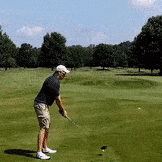Note: This thread is 3113 days old. We appreciate that you found this thread instead of starting a new one, but if you plan to post here please make sure it's still relevant. If not, please start a new topic. Thank you!
-
Topics Being Discussed Right Now on The Sand Trap
-
- 85 replies
- 25,935 views
-
- 55 replies
- 17,988 views
-
- 5 replies
- 199 views
-
- 82 replies
- 11,729 views
-
- 8,090 replies
- 346,088 views
-






Recommended Posts
Create an account or sign in to comment
You need to be a member in order to leave a comment
Create an account
Sign up for a new account in our community. It's easy!
Register a new accountSign in
Already have an account? Sign in here.
Sign In Now